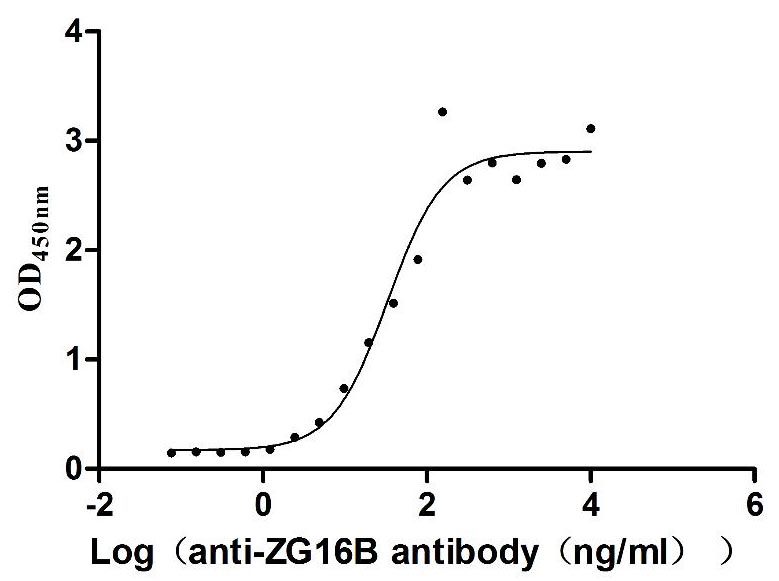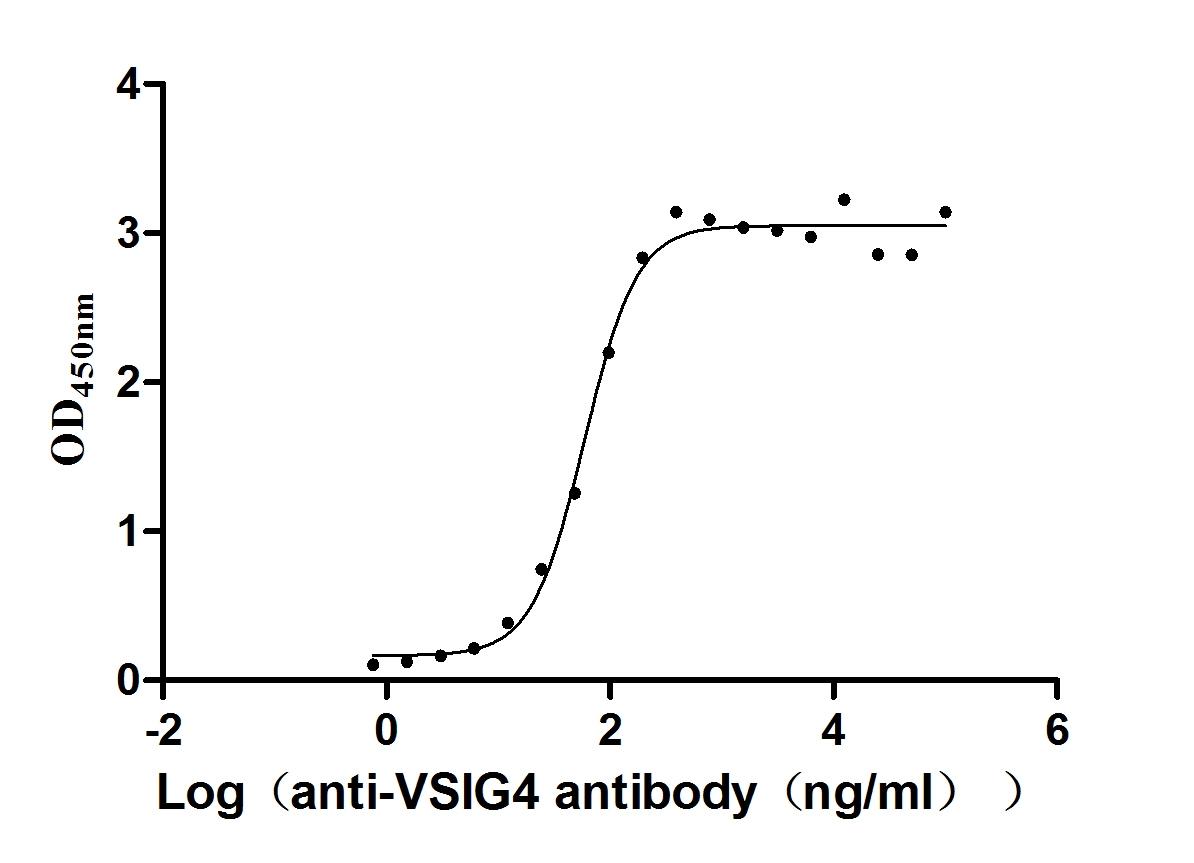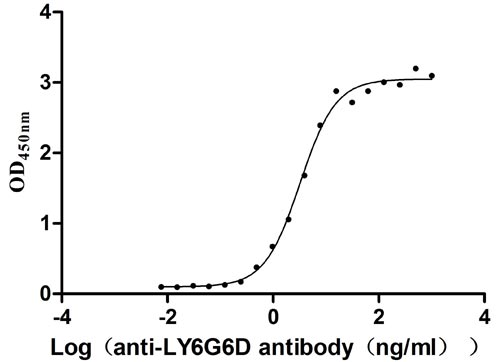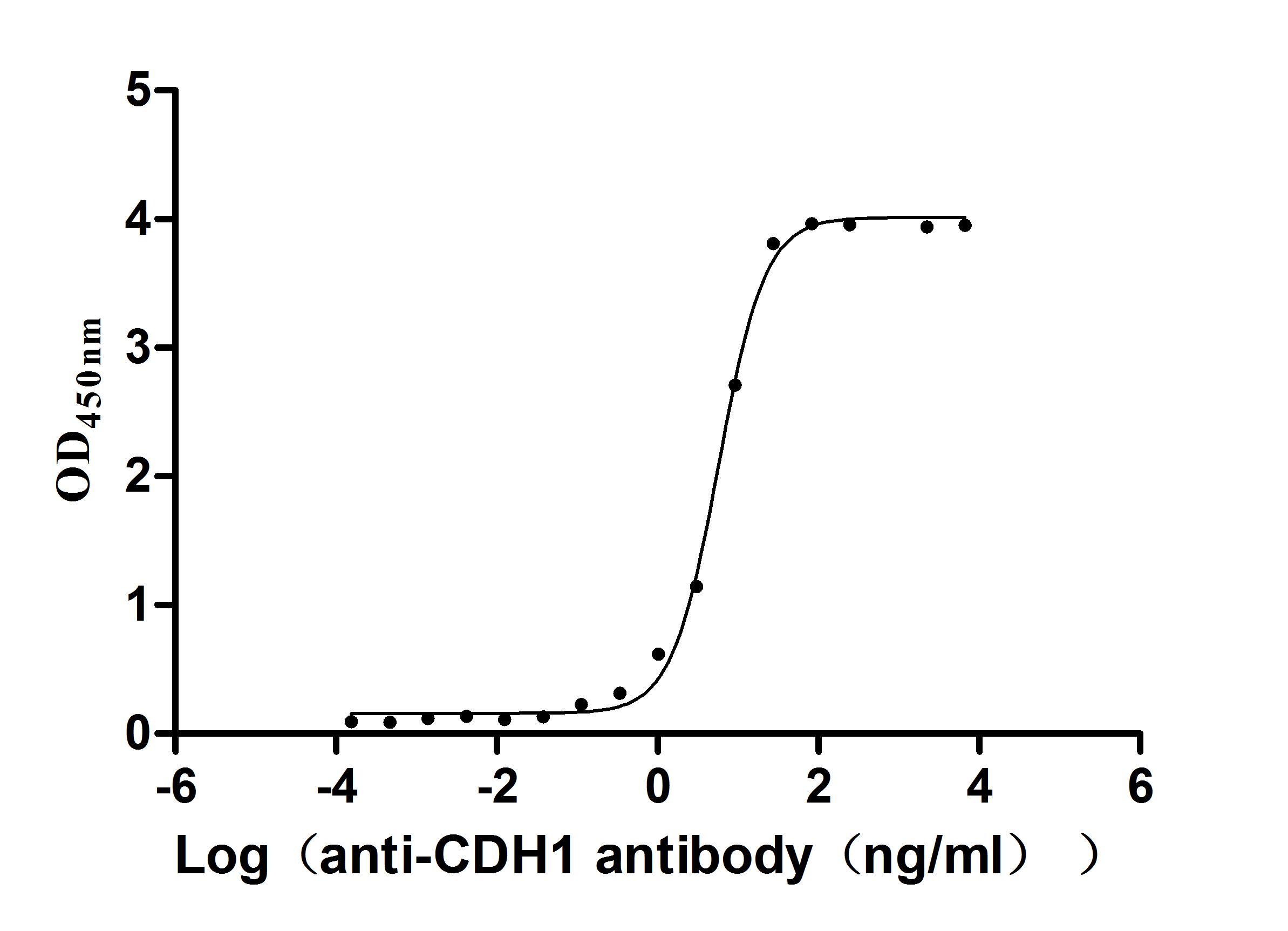Recombinant Human RNA-binding protein 10 (RBM10), partial
-
中文名称:人RBM10重组蛋白
-
货号:CSB-YP019400HU
-
规格:
-
来源:Yeast
-
其他:
-
中文名称:人RBM10重组蛋白
-
货号:CSB-EP019400HU
-
规格:
-
来源:E.coli
-
其他:
-
中文名称:人RBM10重组蛋白
-
货号:CSB-EP019400HU-B
-
规格:
-
来源:E.coli
-
共轭:Avi-tag Biotinylated
E. coli biotin ligase (BirA) is highly specific in covalently attaching biotin to the 15 amino acid AviTag peptide. This recombinant protein was biotinylated in vivo by AviTag-BirA technology, which method is BriA catalyzes amide linkage between the biotin and the specific lysine of the AviTag.
-
其他:
-
中文名称:人RBM10重组蛋白
-
货号:CSB-BP019400HU
-
规格:
-
来源:Baculovirus
-
其他:
-
中文名称:人RBM10重组蛋白
-
货号:CSB-MP019400HU
-
规格:
-
来源:Mammalian cell
-
其他:
产品详情
-
纯度:>85% (SDS-PAGE)
-
基因名:
-
Uniprot No.:
-
别名:DXS8237E; G patch domain containing protein 9; G patch domain-containing protein 9; GPATC9; GPATCH9; HGNC9896; KIAA0122; MGC1132; MGC997; Rbm10; RBM10_HUMAN; RNA binding motif protein 10 ; RNA binding protein 10; RNA binding protein S1-1; RNA-binding motif protein 10; RNA-binding protein 10; RNA-binding protein S1-1; S1-1; TARPS; ZRANB5
-
种属:Homo sapiens (Human)
-
蛋白长度:Partial
-
蛋白标签:Tag type will be determined during the manufacturing process.
The tag type will be determined during production process. If you have specified tag type, please tell us and we will develop the specified tag preferentially. -
产品提供形式:Lyophilized powder
Note: We will preferentially ship the format that we have in stock, however, if you have any special requirement for the format, please remark your requirement when placing the order, we will prepare according to your demand. -
复溶:We recommend that this vial be briefly centrifuged prior to opening to bring the contents to the bottom. Please reconstitute protein in deionized sterile water to a concentration of 0.1-1.0 mg/mL.We recommend to add 5-50% of glycerol (final concentration) and aliquot for long-term storage at -20℃/-80℃. Our default final concentration of glycerol is 50%. Customers could use it as reference.
-
储存条件:Store at -20°C/-80°C upon receipt, aliquoting is necessary for mutiple use. Avoid repeated freeze-thaw cycles.
-
保质期:The shelf life is related to many factors, storage state, buffer ingredients, storage temperature and the stability of the protein itself.
Generally, the shelf life of liquid form is 6 months at -20°C/-80°C. The shelf life of lyophilized form is 12 months at -20°C/-80°C. -
货期:Delivery time may differ from different purchasing way or location, please kindly consult your local distributors for specific delivery time.Note: All of our proteins are default shipped with normal blue ice packs, if you request to ship with dry ice, please communicate with us in advance and extra fees will be charged.
-
注意事项:Repeated freezing and thawing is not recommended. Store working aliquots at 4°C for up to one week.
-
Datasheet :Please contact us to get it.
相关产品
靶点详情
-
功能:May be involved in post-transcriptional processing, most probably in mRNA splicing. Binds to RNA homopolymers, with a preference for poly(G) and poly(U) and little for poly(A). May bind to specific miRNA hairpins.
-
基因功能参考文献:
- RBM10: Harmful or helpful-many factors to consider. PMID: 29274279
- RBM10 mutations contribute to lung adenocarcinoma pathogenesis. PMID: 28091594
- The high rate of TERT promoter mutations, MED12 mutations, RBM10 mutations, and chromosome 1q gain highlight their likely association with tumor virulence PMID: 28634282
- The well-known high-fidelity RNA splice site recognition by RBM10, and probably by RBM5 and RBM6, can thus be largely rationalized by a cooperative binding action of RRM and ZnF domains PMID: 29450990
- Our work has not only expanded the number of pre-mRNA targets for RBM10, but identified RBM10 as a novel regulator of SMN2 alternative inclusion. PMID: 28728573
- RBM10 functions as a splicing regulator using two RNA-binding units with different specificities to promote exon skipping. PMID: 28379442
- RNA binding motif protein 10 (RBM10) negatively regulates its own mRNA and protein expression and that of RNA binding motif protein 5 (RBM5) by promoting alternative splicing-coupled nonsense-mediated mRNA decay (AS-NMD). PMID: 28586478
- results provide evidence that RBM10 expression, in RBM5-null tumors, may contribute to tumor growth and metastasis. Measurement of both RBM10 and RBM5 expression in clinical samples may therefore hold prognostic and/or potentially predictive value PMID: 28662214
- RBM10-TFE3 is a recurrent gene fusion in Xp11 translocation renal cell carcinoma. PMID: 28296677
- Xp11 translocation renal cell carcinomas with RBM10-TFE3 gene fusion demonstrating melanotic features and overlapping morphology with t(6;11) RCC. PMID: 28288037
- RNA-binding motif 10 messenger RNA and protein were reduced in lung adenocarcinoma tissues, and RNA-binding motif 10 overexpression inhibited lung adenocarcinoma cancer cell malignant behavior in vitro. Molecularly, RNA-binding motif 10 regulates many gene pathways involving in the tumor development or progression. PMID: 28347232
- RBM10-TFE3 fusion variant (from chromosome X paracentric inversion), therefore, appears to be a recurrent molecular event in Xp11.2 RCCs. RBM10-TFE3 fusion should be added in the list of screened fusion transcripts in targeted molecular diagnostic multiplex RT-PCR PMID: 26998913
- RBM10 is a tumor suppressor that represses Notch signaling and cell proliferation through the regulation of NUMB alternative splicing PMID: 26853560
- Src family tyrosine kinase signaling may regulate FilGAP through association with RBM10 PMID: 26751795
- The ability of RBM10v1 to regulate alternative splicing depends, at least in part, on a structural alteration within the second RNA recognition motif domain, and correlates with preferential expression of the NUMB exon 11 inclusion variant. PMID: 25889998
- RBM10 regulates alternative splicing of Fas and Bcl-x genes. PMID: 24530524
- Antagonizes the effects of RBM5, RBM6, and RBM10 in cell colony formation. PMID: 24332178
- This study established RBM10 as an important regulator of alternative splicing, presented a mechanistic model for RBM10-mediated splicing regulation and provided a molecular link to understanding a human congenital disorder. PMID: 24000153
- S1-1 contains multiple nuclear localisation sequence that act cooperatively. PMID: 23294349
- Massively parallel sequencing of exons on the X chromosome identifies RBM10 as the gene that causes a syndromic form of cleft palate. PMID: 20451169
- From these results, it seems that the X-chromosome, through its RBM genes, plays a formerly unknown role in the regulation of programmed cell death (apoptosis) in breast cancer. PMID: 16552754
- S1-1 constitutes hundreds of nuclear domains, which dynamically change their structures in a reversible manner; upon globally reducing RNA polymerase II transcription, S1-1 nuclear bodies enlarge and decrease in number. PMID: 18315527
- results indicate that very few genes are involved in the last steps of the apoptotic cascade in breast cancer, among them one of the X-chromosome RBM family PMID: 18820371
显示更多
收起更多
-
相关疾病:TARP syndrome (TARPS)
-
亚细胞定位:Nucleus. Note=In the extranucleolar nucleoplasm constitutes hundreds of nuclear domains, which dynamically change their structures in a reversible manner. Upon globally reducing RNA polymerase II transcription, the nuclear bodies enlarge and decrease in number. They occur closely adjacent to nuclear speckles or IGCs (interchromatin granule clusters) but coincide with TIDRs (transcription-inactivation-dependent RNA domains).
-
数据库链接:
Most popular with customers
-
Recombinant Human Pancreatic adenocarcinoma up-regulated factor (ZG16B) (Active)
Express system: Mammalian cell
Species: Homo sapiens (Human)
-
Recombinant Human V-set and immunoglobulin domain-containing protein 4 (VSIG4), partial (Active)
Express system: Mammalian cell
Species: Homo sapiens (Human)
-
Recombinant Human Lymphocyte antigen 6 complex locus protein G6d (LY6G6D) (Active)
Express system: Yeast
Species: Homo sapiens (Human)
-
Recombinant Human Claudin-6 (CLDN6)-VLPs, Fluorescent (Active)
Express system: Mammalian cell
Species: Homo sapiens (Human)
-
Recombinant Human Cadherin-1(CDH1),partial (Active)
Express system: Mammalian cell
Species: Homo sapiens (Human)





f4-AC1.jpg)










